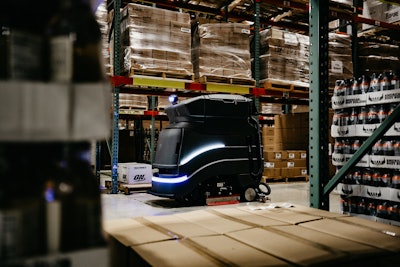
As supply chains continue to face unprecedented disruptions, shortages and changing consumer demands, many companies are looking to automate as a way to keep products moving. The challenge is identifying those automation technologies that can help create and strengthen the global supply chains of the future.
While a broad range of automation technologies are continually emerging to enable the evolution of the supply chain, it can often be difficult to determine which technologies are viable options, deserving of valuable time, research and investment.
Establishing a systematic process for evaluating and piloting emerging technologies is a good first step to streamline and accelerate an application for its customers. This allows companies to identify and provide insight on emerging technologies that have the greatest potential to accelerate the digitalization of the supply chain.
Technology is continuing to evolve, with significant advances inside and out the warehouse, from autonomous guided vehicles to robotic palletizing. So, if you’re exploring automation for your operation, or looking to build off the success of a small pilot program, there are viable options out there.
Automation inside the warehouse
One of the biggest advances inside the warehouse is the move away from inflexible and capital-intensive mechanized automation systems to more flexible autonomous guided vehicles (AGVs) and robotics.
AGVs are already well-established in the warehouse and will continue to play a key role in enabling greater productivity. Available in a variety of sizes and configurations, they can be an economic alternative to conveyors or forklifts for products moving repetitively over fixed routes, such as transporting raw materials to production lines or finished goods from packaging to shipping.
Forklifts also now entail automation capabilities that allow them to work in either autonomous or manual mode. This provides the flexibility for the truck to work as an AGV when performing repetitive tasks or as a traditional forklift operated by a driver when required.
A newer development is the emergence of robot-assisted picking, which has quickly become a valuable tool for warehouse operators supporting e-commerce or omnichannel fulfillment. As more warehouses have been forced to accommodate smaller order sizes and more each picking, manual picking processes have been stretched to the limit.
Autonomous mobile robots (AMRs), available in a variety of configurations, work with pickers to reduce travel times and increase operator productivity. In warehouses where DHL Supply Chain has employed robotic-assisted picking, we have documented a 50% improvement in cycle time and a 100% improvement in productivity. With these systems, humans and machines are collaborating closely and special attention should be paid to safety and efficiency throughout the implementation.
Robotic palletizing and de-palletizing systems provide similar benefits in working with cases or cartons. They bring greater speed and reliability to the heavily physical task of palletizing or de-palletizing while enabling the ability to build pallets for efficient in-store replenishment.
Robotics will become increasingly important to warehouse operations, and in some industries, will be essential to delivering the speed and accuracy customers expect. As with every technology, the more experience that is gained, the easier the integration process.
Click here to hear more about automation in the warehouse:
Automation outside the warehouse
Venturing beyond the warehouse, autonomous driving is also quickly gaining traction. It is most easily achieved in closed, private environments where processes are clearly defined and controlled, so it can be challenging to apply automation to outdoor logistics operations.
The industry as a whole is making progress, and the era of semi-autonomous vehicles is quickly arriving. Semi-trucks controlled entirely by artificial intelligence (AI) may still be a few years away, but companies managing large vehicle fleets need to be aware of the advances in technology and the impact they might have.
Autonomous and semi-autonomous delivery vehicles are also being tested to determine their viability for use in shuttle and same-day customer deliveries. Mileage efficiency is also being tested ion longer runs from major markets to other operations across the country.
Another area outside the warehouse where automation has the potential to be beneficial is when it is used to reduce congestion and improve safety in yards. Autonomous electric yard trucks that use radar, camaras, ultrasonic sensors and LiDAR (using laser light to measure distance) are being tested on their ability to move trailers to and from dock doors and yard locations. They could provide an ideal solution for executing all types of yard logistics, including maneuvering and repositioning transport items such as pallets and swap bodies.
Platooning is also gaining interest. This is where a human-driven vehicle leads the way while a convoy of autonomous vehicles trail behind. The front vehicle acts as a command center, determining the direction and speed of travel. When it turns or slows down, so do the rest. This is done through digital networking, with the use of GPS, WiFi, radar and other assistance systems for autonomous driving.
Truck platooning holds the promise of fuel savings, safer roads and fewer traffic jams, and is seen as the future of road transport. The small distance between the vehicles reduces drag, which can cut down fuel consumption by up to 10%. It is also expected to bring down traffic jams by one-third.
As is evident, there is a lot of activity and advancement occurring around automation technology for the supply chain. With the variety of options available, it is important that your company researches to identify which technologies best fit your operations. Once you have made that determination, the key is to move forward to ensure you realize the full value of these solutions.You may also find it helpful to partner with a third-party logistics provider to help guide you through the process.


















